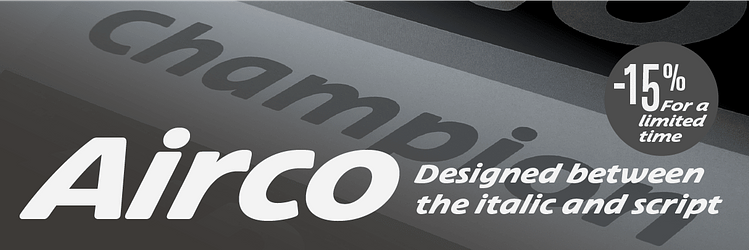Austerlitz Petit
About
A humble and highly legible Didot
Austerlitz is the 4th exploration of the world of Didots and their variants, following Ambroise (2001-16), Mencken Head (2004-16), AW Conqueror Didot (2010-18) published by Typofonderie. Austerlitz is an exception though, in that it is not a pure Didot, it is a versatile typeface in 7 weights with italics, in 4 optical sizes for a total of 56 fonts.
Austerlitz and its context
Austerlitz is a typeface loosely inspired by Série 16 (circa 1878) published by Deberny & cie. The Série 16 is part of “caractères ordinaires modernes” intended for typographic composition at Deberny & Peignot until its closure in 1974. It resembles a Didot, but it does not follow the characteristics of this style: the counterforms are smoothly rounded – in a Didot they are usually straight in contrast –, the stress is not completely vertical, there are traces of written letterforms. In addition, the serifs are bracketed and the italics are an innovation for their time.
The idea of a rather common typeface
In 1878, Émile Javal set out a series of “hygienic” measures, including preferences for certain typefaces, to be taken to combat myopia and thus improve the legibility of texts. The Série 16 and the variant 17 (with its extended descenders) is the result of his physiological theories, which will be gathered in his book Physiologie de la lecture et de l’écriture published in 1905.
When Jan Tschichold — well know for his quest for the ideal for modern typesetting — worked for UherType, he designed several typefaces that were not used or completed: Série 16 (1934) is one of them.
Earlier, in Die Neue Typographie Jan Tschichold defined the characteristics of serif typefaces that would not reference any historical period: a typeface like Austerlitz (in its Petit and Labeur versions) makes itself discreet, like a man who walks into a room, a shop or a museum and that nobody notices. In fact, this type of design is what Adrian Frutiger was looking for when he superimposed different typefaces: “The superimposition of eight serif typefaces brought out a great convergence of the silhouette.”
The characteristics of Austerlitz
Austerlitz is a serif typeface classified as common, natural, harmonious for the Petit and Labeur variants. Then elegant, classic, ornamental for the Gros and Affiche variants.
In text use, Austerlitz roman versions of the Petit and Labeur variants conform to this idea of an unassuming, everyday typeface. It delivers the content with ease, it does not impose itself between the text and the reader, it is sober and knows how to be forgotten.
In Gros and Affiche versions, Austerlitz tells a different story. Its shapes and contrasts, its elegance, reference a late Didot, in its most beautiful ceremonial dress. With strong contrast, the classic typographical forms make a strong statement on the page (paper or screen).
Serifed italics
The Austerlitz italics follow 40 years ahead of Stanley Morison’s ideas, or is it the other way around!? In Fleuron 5 (1926), Stanley Morison publishes Towards an Ideal italic an article in which he defends the idea that an italic is at the service of the roman, that it should not be too cursive, and should take the serifs of the roman. In reality, the Austerlitz italics — inspired by the 16 Séries — goes further. Because the weight is similar to the Roman, the differences in text colour are more subtle, without losing the italic function.
About the names Petit, Labeur, Gros, Affiche and Austerlitz
Our intention was to reference the names given to type sizes before the typographical point system was introduced by P. S. Fournier, then reinforced by the Didot family. With PS Fournier, 3 versions were available: the Basic version, the Small version, the Large version. We adopted the same principle with Austerlitz: Petit will be dedicated to very small sizes, Labeur to intermediate sizes. In French, the term “Labeur” refers to the so-called “labeur” printers who specialize in printing books. But nothing would prevent one from using these two versions in large sizes to continue promoting this idea of the ordinary and the simple, the typeface that knows “how not to be seen”! The Gros version is more adapted to large sizes and the Affiche version is more suitable for use in very large sizes. Finally, the four names follow an alphabetical order, to be more consistent with the listing order in menus.
Austerlitz refers to the battle fought by Napoleon 1st on December 2, 1805. This battle is legendary because the French set out with half as many men as their adversary. Napoleon’s strategy was based on a manoeuvre that deceived the enemies into thinking they had the advantage. The typographical analogy is that Austerlitz is a humble typeface, revealing its assets only once it falls into the hands of a talented designer. It will be up to this designer to enhance it in his projects.
The vignettes and borders of Austerlitz
With Ambroise (2001) we started designing sets of vignettes and borders adapted to every weights and width. A small palette of elements combined in different variations of weight and width offer a fantastic playground for users. Since then, this search for “variable” ornaments and dingbats has never stopped. With Austerlitz, we set out to design a very reduced set of vignettes in weights and contrasts, adaptable and combinable. It is fairly easy to draw a bolder or a more contrasted version of a typeface, whereas doing the same thing with an ornament is sometimes a real challenge. We have included arrows, and their combinable versions, as well as three vignettes, and a set of tools to create blocks and borders, all in 56 variants.
- Jump on Austerlitz dedicated website to read more about type history behind this new typeface as well to enjoy large size type specimens.



















